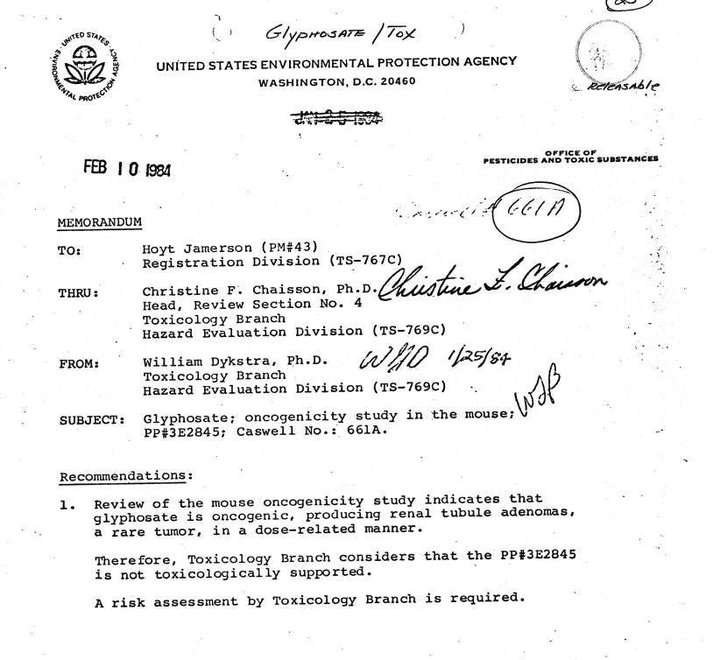|
|
|
|
|
HOW THE EPA LOOKS AT PESTICIDE ASSESSMENT
|
Assessing Health Risks from Pesticides
Este Web page está disponible en español Current as of: April 5, 2007 735-F-99-002 The Federal Government, in cooperation with the States, carefully regulates pesticides to ensure that they do not pose unreasonable risks to human health or the environment. As part of that effort, the Environmental Protection Agency (EPA) requires extensive test data from pesticide producers that demonstrate pesticide products can be used without posing harm to human health and the environment. EPA scientists and analysts carefully review these data to determine whether to register (license) a pesticide product or a use and whether specific restrictions are necessary. This fact sheet is a brief overview of EPA’s process for assessing potential risks to human health when evaluating pesticide products. BackgroundThere are more than 1055 active ingredients registered as pesticides, which are formulated into thousands of pesticide products that are available in the marketplace. EPA plays a critical role in evaluating these chemicals prior to registration, and in reevaluating older pesticides already on the market, to ensure that they can be used with a reasonable certainty of no harm. The process EPA uses for evaluating the health impacts of a pesticide is called risk assessment. EPA uses the National Research Council’s four-step process for human health risk assessment: Step One: Hazard Identification Step Two: Dose-Response Assessment Step Three: Exposure Assessment Step Four: Risk Characterization Step One: Hazard Identification (Toxicology)The first step in the risk assessment process is to identify potential health effects that may occur from different types of pesticide exposure. EPA considers the full spectrum of a pesticide’s potential health effects. Generally, for human health risk assessments, many toxicity studies are conducted on animals by pesticide companies in independent laboratories and evaluated for acceptability by EPA scientists. EPA evaluates pesticides for a wide range of adverse effects, from eye and skin irritation to cancer and birth defects in laboratory animals. EPA may also consult the public literature or other sources of supporting information on any aspect of the chemical. Step Two: Dose-Response AssessmentParacelsus, the Swiss physician and alchemist, the “father” of modern toxicology (1493-1541) said, "The dose makes the poison." In other words, the amount of a substance a person is exposed to is as important as how toxic the chemical might be. For example, small doses of aspirin can be beneficial to people, but at very high doses, this common medicine can be deadly. In some individuals, even at very low doses, aspirin may be deadly. Dose-response assessment involves considering the dose levels at which adverse effects were observed in test animals, and using these dose levels to calculate an equal dose in humans. Step Three: Exposure AssessmentPeople can be exposed to pesticides in three ways:
Simply put, RISK = TOXICITY x EXPOSURE. This means that the risk to human health from pesticide exposure depends on both the toxicity of the pesticide and the likelihood of people coming into contact with it. At least some exposure andsome toxicity are required to result in a risk. For example, if the pesticide is very poisonous, but no people are exposed, there is no risk. Likewise, if there is ample exposure but the chemical is non-toxic, there is no risk. However, usually when pesticides are used, there is some toxicity and exposure, which results in a potential risk. EPA recognizes that effects vary between animals of different species and from person to person. To account for this variability, uncertainty factors are built into the risk assessment. These uncertainty factors create an additional margin of safety for protecting people who may be exposed to the pesticides. FQPA requires EPA to use an extra 10-fold safety factor, if necessary, to protect infants and children from effects of the pesticide. Types of Toxicity Tests EPA Requires for Human Health Risk AssessmentsEPA evaluates studies conducted over different periods of time and that measure specific types of effects. These tests are evaluated to screen for potential health effects in infants, children and adults. Acute Testing: Short-term exposure; a single exposure (dose).
Mutagenicity Testing: Assess a pesticide's potential to affect the cell's genetic components. Hormone Disruption: Measure effects for their potential to disrupt the endocrine system. The endocrine system consists of a set of glands and the hormones they produce that help guide the development, growth, reproduction, and behavior of animals including humans. Risk ManagementOnce EPA completes the risk assessment process for a pesticide, we use this information to determine if (when used according to label directions), there is a reasonable certainty that the pesticide will not harm a person’s health. Using the conclusions of a risk assessment, EPA can then make a more informed decision regarding whether to approve a pesticide chemical or use, as proposed, or whether additional protective measures are necessary to limit occupational or non-occupational exposure to a pesticide. For example, EPA may prohibit a pesticide from being used on certain crops because consuming too much food treated with the pesticide may result in an unacceptable risk to consumers. Another example of protective measures is requiring workers to wear personal protective equipment (PPE) such as a respirator or chemical resistant gloves, or not allowing workers to enter treated crop fields until a specific period of time has passed. If, after considering all appropriate risk reduction measures, the pesticide still does not meet EPA’s safety standard, the Agency will not allow the proposed chemical or use. Regardless of the specific measures enforced, EPA’s primary goal is to ensure that legal uses of the pesticide are protective of human health, especially the health of children, and the environment. Human Health Risk Assessment and the LawFederal law requires detailed evaluation of pesticides to protect human health and the environment. In 1996, Congress made significant changes to strengthen pesticide laws through the Food Quality Protection Act (FQPA). Many of these changes are key elements of the current risk assessment process. FQPA required that EPA consider:
For more information on specific pesticides, or to inquire about the symptoms of pesticide poisoning, call the National Pesticide Information Center (NPIC), a toll-free hotline information at: 1-800-858-7378, or visit their Web site . Assessing Pesticide Cumulative Risk This website provides information on EPA's
EPA has developed a framework for conducting cumulative risk assessments. In assessing cumulative risks, EPA evaluates the potential for people to be exposed to more than one pesticide at a time from a group with an identified common mechanism of toxicity. These cumulative assessments consider exposures from food, drinking water, and residential sources. The Agency also incorporates regional exposures from residential and drinking water sources since this is the most appropriate way to account for the considerable variation in potential exposures across the country. EPA's cumulative assessments, therefore, approximate as closely as possible people's actual exposures and potential risks resulting from current uses of these pesticides in different parts of the country. The Agency has determined so far that five groups of pesticides each have a common mechanism of toxicity and require cumulative risk assessments because exposure to these pesticide groups may pose potential risks to human health and the environment. The five groups are: the organophosphates, N-methyl carbamates, triazines, chloroacetanilides, and pyrethrins/pyrethroids. The Agency has determined that two other groups of pesticides, the thiocarbamate and dithiocarbamate pesticides, should not undergo cumulative assessments since chemicals in those two groups do not act the same way in the body. In late 2001 and early 2002, EPA provided an opportunity for the public to comment on the Agency's common mechanism determinations for the thiocarbamates (PDF) (46 pp, 348 KB, About PDF) and dithiocarbamates (PDF) (51 pp, 418 KB, About PDF), which also belong to the carbamate group of pesticides. EPA considered four common effects, including acetyl cholinesterase inhibition, and determined that the thiocarbamates and dithiocarbamates do not share a common mechanism of toxicity. Through cumulative risk assessment, EPA considers whether the risks posed by a group of pesticides that act the same way in the body meet the safety standard of "reasonable certainty of no harm" established by FQPA. During the development of individual and cumulative risk assessments and subsequent risk management decisions, EPA provides a number of opport |







